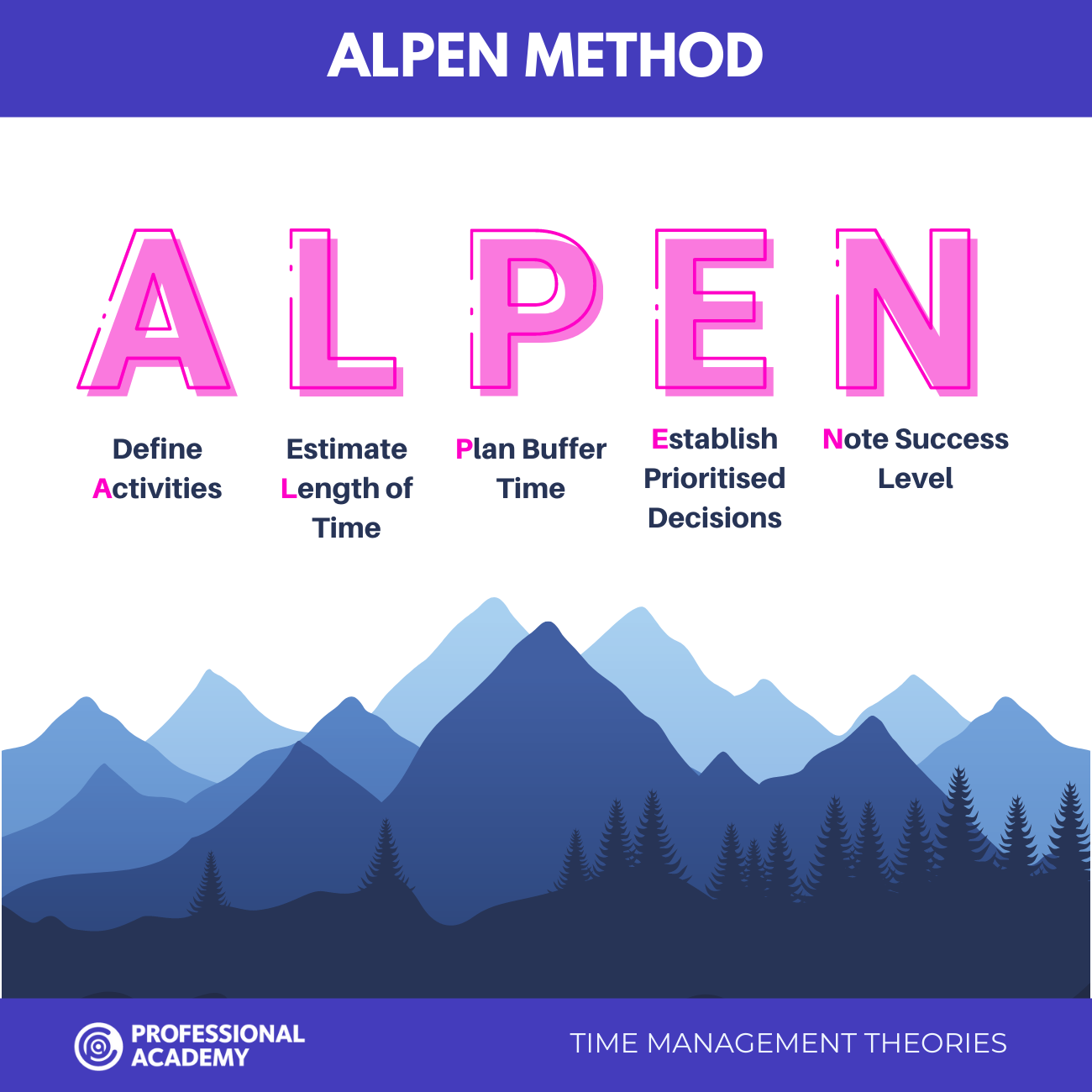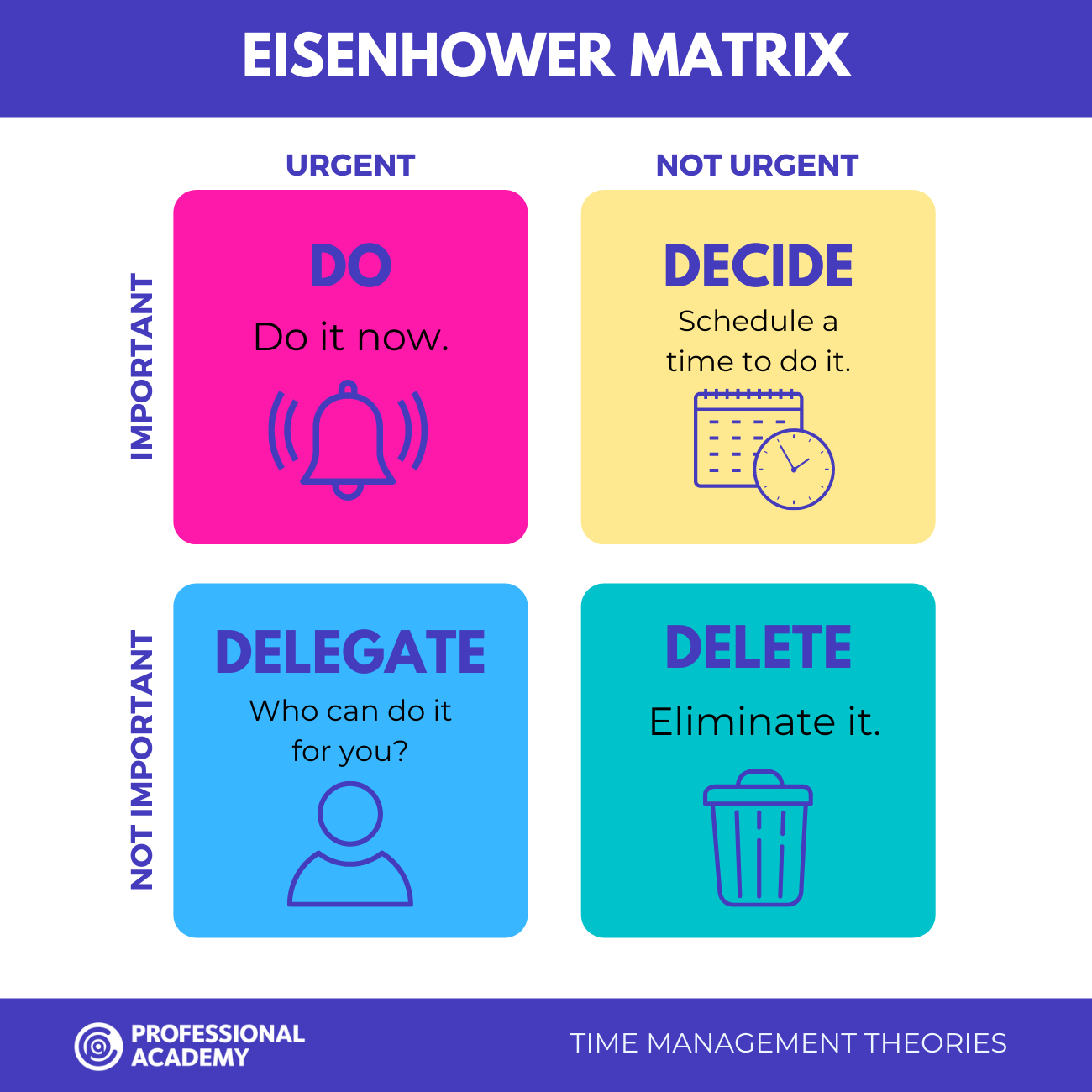

Does time run away from you? Do you often find yourself not completing goals you set for yourself? Then it might be time to work on your time management. For serial procrastinators, it can be difficult to focus on tasks and all too easy to get distracted! If you find yourself even feeling the need to stray away from reading this, then these techniques should help.
The following tried and tested time management theories can be applied to any project, whether at work, in education, or in your personal life.
This technique comes in handy when you’ve got lots to do in a small amount of time. That’s because it uses the The Pareto Principle. Simply put, it theorizes that 80 percent of a project's benefit comes from 20 percent of the work.
It works by listing and identifying problems, then ranking them in order of the largest pay-off. Using this tool you can group your tasks in order of effectiveness, helping you prioritise things that will have the biggest positive outcome.
A great one for those with short attention spans, the Pomodoro technique is a popular tool that breaks up work intervals with small breaks. It creates manageable periods of hyper-focus which can feel less daunting than working solidly for hours at a time.
Here’s how it works. For each 25 minutes you focus on a task or project, take a 5 minute break. Then after four Pomodoros, take a 20-30 minute break. You’ve earned it!

Picture a Pickle Jar that holds all your tasks. The jar represents time. Your tasks are represented by rocks (important tasks), pebbles (tasks of medium importance), and sand (small, less important tasks).
To plan each day, start by adding rocks to your jar, followed by a small handful of pebbles, and some sand. The important part is to think about the order and volume of each item. If you add too much sand, there would be no room for rocks, and vice versa. This technique is all about visualising your tasks and making sure you prioritise in the best way.

Theorised by German economist Lothar J. Seiwert, ALPEN uses an acronym to help you better plan your day. It involves preparing a defined to-do list at the beginning of the day, thinking about how long each task will take, and then setting time slots for each item.
ALPEN stands for:

The Eisenhower Matrix recognises the difference between urgent and important tasks, and is useful in recalibrating your priorities so each area gets the required attention. Inspired by president Dwight D. Eisenhower in 1954, the matrix has since been developed to measure tasks in order of importance and urgency.
Urgent tasks demand immediate attention. Because of this, other tasks can be put off or ignored, and longer term goals and growth opportunities are delayed. The matrix helps you focus on both important and urgent tasks, whilst giving less time to distractions.

So whether you’re studying or at work, these techniques can come in useful to manage your time. Of course everyone is different and what works for one person may not for another. So it’s important to choose the time management tools most suited to your working style and personality.
If you want to progress in marketing, management, or sales, then you’re in the right place! Professional Academy have a range of career boosting qualifications to help you achieve your goals. Find out more by getting in touch today, downloading a prospectus, or completing our online entry level assessment to find your perfect course.